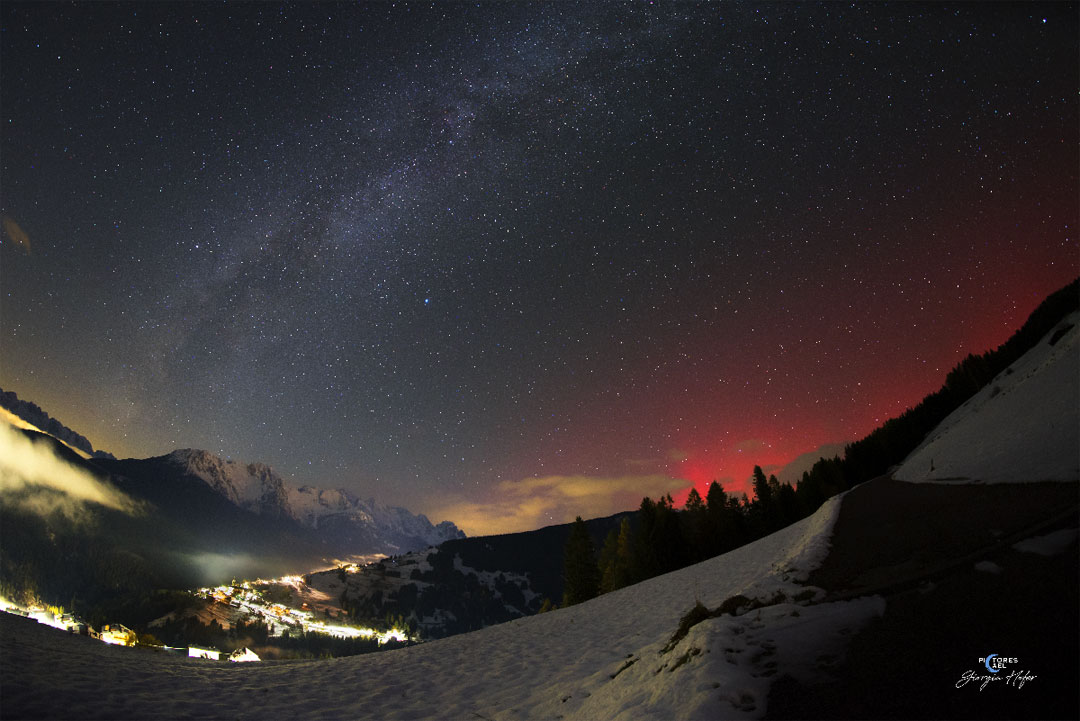The red stuff in today's APOD is easy to see, but can you find the one blue spot in this picture (apart from the lettering at lower right)?
Here it is:
Blue Vega. Lovely Vega. If you see a picture of the Milky Way, and there is one blue star, bluer than anything else in the picture, close to but detached from the Milky Way, you can bet your boots it is Vega.
If you don't remember seeing a blue star in the sky, it's because Vega doesn't look blue to the naked eye. But look at it through a telescope, and its blue-white color is just jumping out at you. And in many RGB photographs of the northern Milky Way, the singularly blue hue of this beacon of the north is just ridiculously obvious.
And yet this blue star has been used for some 70 years as an astronomical standard of stellar whiteness! That's so horribly wrong!
Wikipedia wrote:
The UBV photometric system measures the magnitude of stars through ultraviolet, blue and yellow filters, producing U, B and V values, respectively. Vega is one of six A0V stars that were used to set the initial mean values for this photometric system when it was introduced in the 1950s. The mean magnitudes for these six stars were defined as: U − B = B − V = 0.
In effect, the magnitude scale has been calibrated so that the magnitude of these stars is the same in the yellow, blue and ultraviolet parts of the electromagnetic spectrum. Thus, Vega has a relatively flat electromagnetic spectrum in the visual region—wavelength range 350–850 nanometers, most of which can be seen with the human eye—so the flux densities are roughly equal; 2,000–4,000 Jy. However, the flux density of Vega drops rapidly in the infrared, and is near 100 Jy at 5 micrometers.
So the magnitude scale has been
calibrated so that the U-B and B-V indices of Vega are defined as zero. And Vega has a relatively flat spectrum in the visual region??? It emits the same amount of ultraviolet, blue and yellow-green light? Its light curve just suddenly drops off when we enter the infrared region?
NO!!!! It does not!

And Vega's scientifically accredited (but totally inaccurate) stellar whiteness has led renowned astronomers to describe it as white even in captions of pictures plainly displaying its azure hue:
Okay! Vega does look white to the naked eye, I'll grant you that. But it sure looks blue in the picture, so why not mention that it looks blue through a telescope, and that a good camera will easily pick up its blue hue? It's like these people are denying what they are seeing.
Okay. Now that I've ranted

, I'll leave it to the rest of you to discuss the red aurora!

Ann
 Red Aurora over Italy
Red Aurora over Italy

